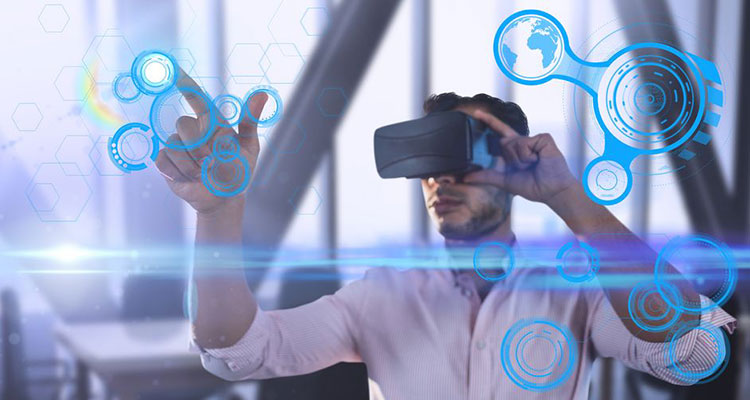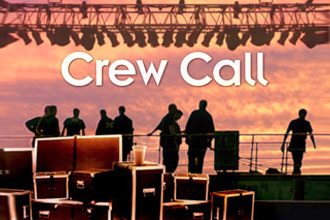Losing Our Lunch
 This morning I was involved in testing two of the new virtual reality conferencing environments. As most of you will be painfully aware, the conferencing industry has gone through a number of revolutions in the past decade, from videoconferencing to telepresence to collaboration and now on to VR. At each of them, we tout the fact that we have eliminated some of the problems that came with earlier varieties of distance conferencing. And at each of those points, we have been right. Each of them have eliminated objections to earlier forms of teleconferencing. And the next generation of them is undoubtedly based on virtual reality. And this next generation will affect all areas of the industry, from rental and staging to installations to facility management.
This morning I was involved in testing two of the new virtual reality conferencing environments. As most of you will be painfully aware, the conferencing industry has gone through a number of revolutions in the past decade, from videoconferencing to telepresence to collaboration and now on to VR. At each of them, we tout the fact that we have eliminated some of the problems that came with earlier varieties of distance conferencing. And at each of those points, we have been right. Each of them have eliminated objections to earlier forms of teleconferencing. And the next generation of them is undoubtedly based on virtual reality. And this next generation will affect all areas of the industry, from rental and staging to installations to facility management.
In the early days of videoconferencing, it was a new capability, but was typically installed and used in ways that made it clumsy to use, because it was typically installed on top of existing conference rooms. So we looked down from some height way above the screen into the tops of people’s heads, in both directions. The telepresence movement had us creating dedicated rooms with appropriate placement of equipment and assets to make them more usable and friendly for distance communication. The problem there has always been that the added usability came at a very high cost and that it really only worked well with identically-equipped rooms. The movement to collaboration equipment made it easier for people to share their work, but never really addressed the inequality of the collaboration environments in that not everybody had the same equipment or the same access. The virtual reality environment addresses much of this by placing all participants in the same virtual room with the same virtual set of equipment, equalizing participation capability.
 At each of these “phases,” distance participation has been easier to do and has worked better. More and more of the assets that we would have if we were all in the same conference room are available to us and on top of that they all work better. VR meetings put everybody in the meeting on even footing and give everybody the same access to the assets of a meeting room.
At each of these “phases,” distance participation has been easier to do and has worked better. More and more of the assets that we would have if we were all in the same conference room are available to us and on top of that they all work better. VR meetings put everybody in the meeting on even footing and give everybody the same access to the assets of a meeting room.
One would think that this would spell disaster for both the rental and installation industries, as the requirements to use a virtual conference room are only a computer and the VR headmounted display that will be this year’s most popular Christmas gift. Once those items are in place, environments from “huddle room” configurations to full board room configurations can be made available in virtual space. And, as when any new form of distance communication is introduced, for a time people will talk about the idea that holding group meetings that everyone travels to, or even installing large conference space, is unnecessary anymore.
But we have not yet addressed the thing that all distance conferencing lacks.
Doughnuts.
But I do not say that facetiously. This morning, we all made jokes about the fact that our VR meeting did not allow for us to take a break and have doughnuts or go outside and smoke. In the group I was meeting with, this had always been one of the points where we had side discussions that changed what we were going to say when we went back into the meeting. Those breaks have always been the places where we discussed things that were not on the formal agenda for the meeting.
English language has this great word: serendipity. It means to find an unexpected benefit, as in finding oil while you are prospecting for gold.
In-person meetings, and the shared office in general, have the side benefit of producing ideas and discussions that don’t happen in distance communications. Distance meetings tend to be very efficient, with a published agenda and a “host” who is in charge of making sure that the agenda is completed. People tend to stay on track and in fact this is one of the ideas we have used as an industry for many years to promote the idea of distance meetings.
But they do not promote that lunchtime discussion. The lunch break is transformed from being the time at which we all kick around ideas that were not part of the meeting to a 15-minute break where we all log out and frantically return our email. We have lost our lunch and even more importantly, we have lost the water cooler, where employees and participants from different departments who were not part of the meeting got together. This is the location where people from accounting and people from marketing had impromptu conversations about their issues and often came up with unexpected ideas.
These watercooler conversations have always been part of the uncounted benefit that comes from getting people together. My prediction is that in today’s fast-moving business environment, the lack of this serendipity will be discovered quite quickly. So while I do predict that VR will have an enormous impact on distance conferencing, I don’t think (in the long term) it will change the need for real meeting spaces or real conventions and meetings held in outside spaces or at least not as much as some of the pundits are predicting that it will.
In the meantime, I am going about my business creating virtual meeting spaces for people. But I have decided to equip each virtual meeting room with an outside hallway and a virtual water cooler.
JRR





